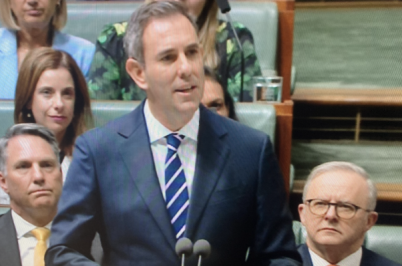Councils have expressed alarm at the phasing out of the LRCI program, but there’s fresh cash on offer in this year’s federal budget in the form of new grants programs for local infrastructure and precinct-led development in urban communities.

The Thriving Suburbs Program announced last night will be funded $211.7 million over the next three years to provide councils and not-for-profits with merit-based, locally driven grants.
Meanwhile, almost $160 million will be provided over four years for the Urban Precincts and Partnerships Program, designed to support investment in place-based priorities via partnerships with state, territory and local governments, private investors and communities.
The program will fund business cases for investment-ready proposals and support delivery of larger scale precinct projects.
Size of grants yet to be determined
Local government minister Catherine King says the size of individual grants is yet to be determined, but is likely to be “around the $500,000 to $15 million mark” for Thriving Suburbs, with some council matching required.

The precincts program will provide larger grants, the minister said.
“We’d be looking for funding partners in that, so, it might be councils, it might be state government, it might be private sector developers or not-for-profit organisations,” Ms King said.
Ms King says the two programs will target investment in urban infrastructure that connects communities to services and improves liveability and inclusion.
“Where suburban centres are looking to really develop their arts and cultural precincts, a sporting precinct, industrial precinct, something that will really change the way the suburb works and the way in which people are able to live in that suburb, we’re looking for really good examples of what you might do there,” she told the ABC.
“It might be the councils saying, we want to bring some of the council library services into our shopping district, or we’ve got a private developer who’s looking at some social and affordable housing, or we’ve got an unused park or it’s really rundown, or we want to try and make this into a really liveable precinct for people around public transport hubs.”
Peak alarmed to see loss of LRCI program
ALGA says the new programs go a little way towards making up for disappointment over the axing of the Local Roads and Community Infrastructure Program, which has been crucial in helping councils deliver local infrastructure since it was established in 2020.

It comes after the government’s limited LRCI funding to rural, regional, and outer-metropolitan councils in the latest round, prompting ALGA to call for the program to be made permanent at $500 million a year.
The demise of the program would be partly offset by the two new urban funding programs, as well as the Growing Regions and Regional Precinct Funds, President Linda Scott said.
However LGAQ said it was ‘alarming’ that the program will disappear in 2026-27.
“Our members were clear in their resolve that this program should continue – for community infrastructure as well as roads and for all councils,” President Alison Smith said.
Disaster measures welcomed
ALGA has welcomed the continuation of the $200 million Disaster Ready Fund and the announcement of new flood warning infrastructure remediation, which Cr Scott said would allow councils to better protect communities from flooding and other natural disasters.

Close to 70 per cent of Australians were impacted by storms, floods, cyclones and bushfires in 2022, “signalling the urgent need to take decisive action,” Emergency minister Murray Watt said of the measures.
The Government will provide $236 million over the next 10 years to remediate high priority flood warning infrastructure and address reliability risks, with work in Queensland prioritised for the upgraded network.
The Bureau of Meteorology will acquire and integrate local and state government-owned rain and river gauges into its existing flood warning network and oversee operation and maintenance.
Cr Smith says LGAQ has welcomed the announcement, saying Queensland was Australia’s most natural disaster-prone state, and needed the best possible warning system.
She says a 2021 scoping study found many of the state’s 3,000 gauges weren’t fit-for-purpose or were past their use-by date and unreliable.
“This funding of priority upgrades is a welcome step forward to keeping communities safe, and we will be seeking the federal government’s commitment to upgrade Queensland’s entire network so that all of our rain gauges are reliable and well-maintained into the future,” she said.
Money for roads
There’s also money in the kitty for roads, including $500 million for Roads to Recovery, $110 million for the black spot program, $85 million for bridges renewal and $60 million over three years to continue supplementary local road funding for South Australian councils disadvantaged by the national local roads funding formula.
“ALGA welcomes the $500 million in local road funding, and will continue to advocate for a significant increase to the Roads to Recovery Program that will support all councils to build better, more resilient roads,” Cr Scott said.
She said ALGA also welcomed the extension of the Remote Airstrip Upgrade Program and a new $10 million National Waste Education campaign.
Still no joy on FAGs
Cr Scott says councils are glad to be getting $3.1 billion in Financial Assistance Grants over the next 12 months.
But ALGA remains perennially disappointed “that another federal budget has passed without the government delivering on their pre-election promise of ‘fair increases’ to these grants.”
FAGs had actually been cut as a percentage of tax revenue, Cr Smith said.
“The Budget has cut federal assistance grants to councils from 0.52 percent to 0.5 percent,” Ms Smith said.
“The federal government’s failure to restore the grants to the one per cent of tax revenue so desperately needed by councils will significantly hurt communities across Queensland.”





Leave a Reply